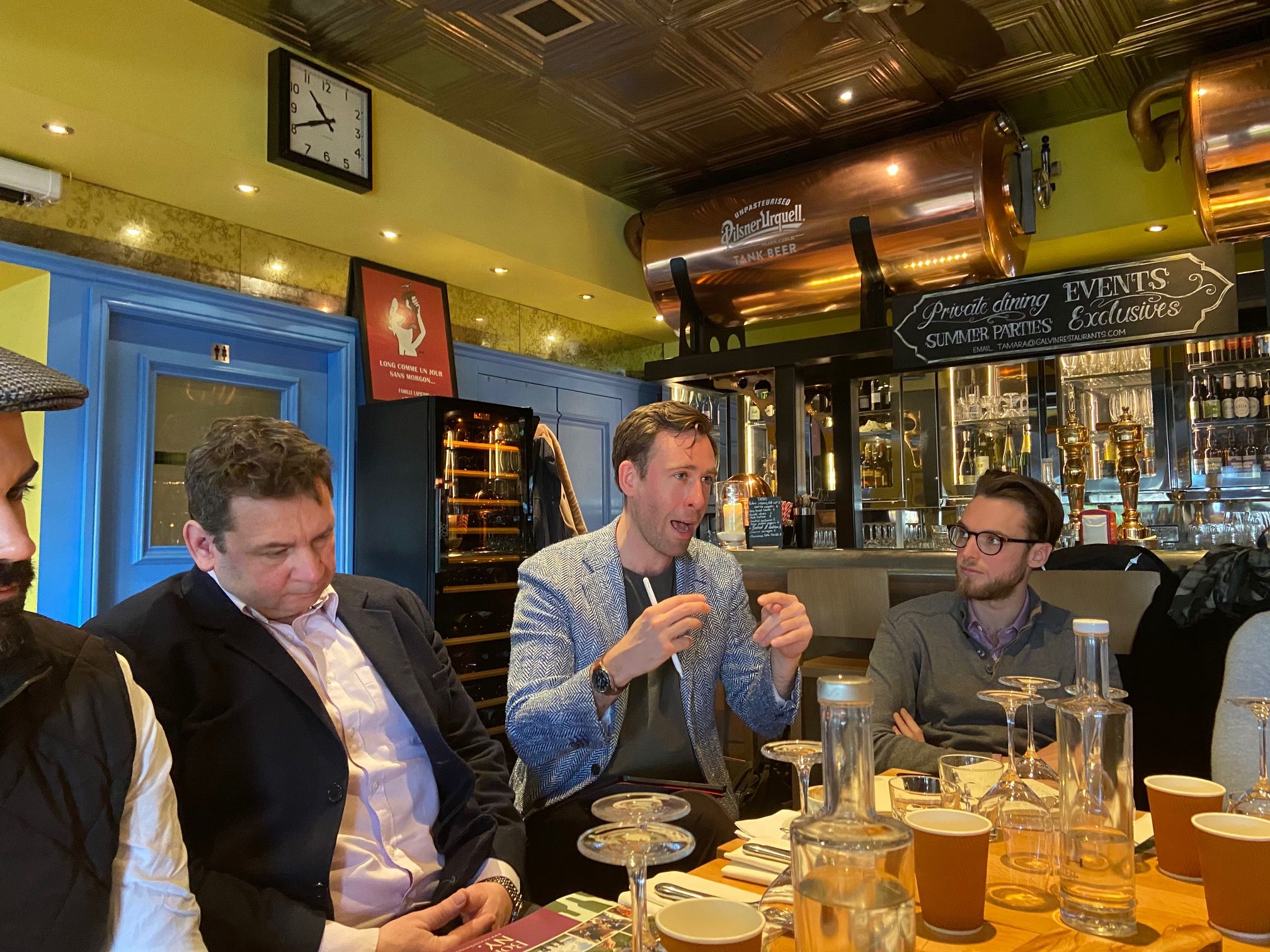This is part one of a major two part report on our New York State buyers’ debate. Here we examine why importers should be interested in a region that is getting so many young winemakers excited about.
It’s certainly not an exact science, but it is possible to quickly assess just how genuinely interesting a particular country or emerging wine region is to wine buyers by how fast they respond to an email asking if they would like to take part in a roundtable debate and tasting of that area’s wine.
If you get pretty much an immediate answer then you can be confident this is an area on the up and up. If after a few days of silence you have go to chasing, you know it’s going to be a lot harder for wine producers in that region to get a listing for their wines.
Fortunately, when it came to hosting an event for New York State Wines, the response from buyers was both fast and enthusiastic.
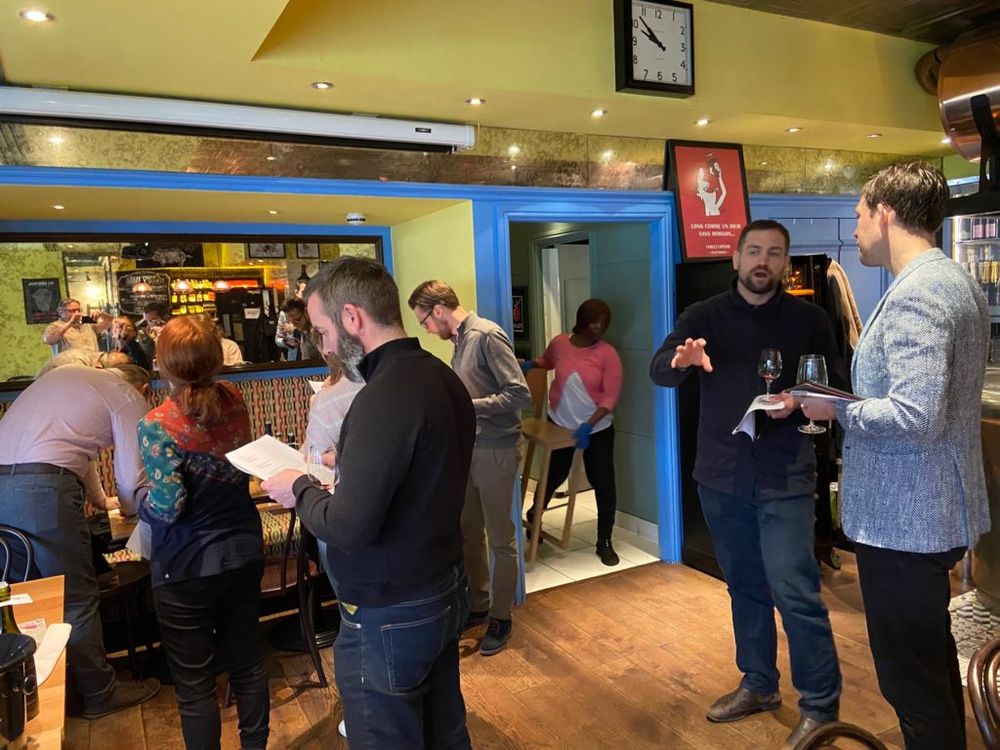
The event was a chance for leading UK wine importers and buyers to both taste and debate New York wines
The concept
What was of particular interest to the buyers was that we were not just giving them the opportunity to talk about New York wines, but the chance to taste them – in two specific ways:
First they were able to work their way through a range of wines from producers that are not currently distributed in the UK. Wines that were also selected to showcase the styles of wine that are being made across New York State.
Then crucially they were also able to taste through a selection of wines that have been listed and are being sold successfully by distributors and importers in the UK. Giving buyers a rare chance to both discover news wines, but also benchmark them against wines that other buyers have chosen to sell in the UK.
Why New York? Why now?
This was by far not the first time that New York has looked to introduce and show its wines to the UK premium wine trade.
But the feeling now is styles of wine being made in New York are far more on trend with the kinds of wines that buyers are increasingly looking to list. Cool climate wines that share fresh fruit characteristics, good acidity and wines that potentially have that winning combination of great quality, with good value, particularly at the more premium price points.
There are also now more wine producers looking to branch out and build distribution outside the US and see the UK as a pivotal market, not just where they can sell their wines, but to act as a shop window to other key markets around the world.
New York State: At a Glance

There are now 240 wineries in Finger Lakes with many more opening each year
It’s the cooling influence of the large glacial lakes, arguably the signature feature of the Finger Lakes, the state’s most well-known AVA, that helps shape what the region’s wines are all about. In all, the state includes:
- Five major wine regions: Finger Lake (43 degrees latitude); Lake Erie (43); Hudson River (42); Long Island (41); Niagara Escarpment.
- It grows 35 main varieties across nine AVAs.
- Up to 1930s only had native varieties including Concord, Catawba and Niagara alongside then French-American varieties like Baco Noir, Seyval Blanc.
- Most well known for Riesling, Merlot and Cabernet France.
- New York State is 330 miles north to south and 283 miles east to west occupying 54,575 square miles. The state lies within the world’s ‘wine belt’ between 28 to 50 degrees North latitude.
- It is the third biggest wine producing region in the United States.
The Producers
Whilst we were fortunate the timing of the event came a week before the Covid-19 lockdown, it did mean not all the producers that had hoped to show their wines were able to travel from the US to take part. The Buyer will be profiling those producers separately in the coming weeks, giving them the chance to share their stories and introduce their wines.
We were, though, able to lean on the expertise of two highly influential New York State wine producers that were able to attend and represent not just their own wines but the overall wine philosophy of New York S tate wines. They were:
- Kelby Russell, winemaker, Red Newt Cellars
- Jennifer Menges, director of operations, for Hermann J Wiemer
The Panel
Fortunately the buyers had less distance to travel and were able to take part in both the initial tasting and then subsequent panel debate. They included:

Maggie Macpherson, centre, from Jeroboams with fellow buyer from Liberty Wines, Lucy Perbellini and New York winemaker, Kelby Russell, Red Newt Cellars
- Maggie Macpherson, group buyer, Jeroboams.
- Mattia Scarpazza, head sommelier, Petersham Nurseries.
- Daniel Lambert, founder, Daniel Lambert Wines
- Richard Ellison, founder, Wanderlust Wines
- Keith Kirkpatrick, wine buyer, Roberson Wines
- Elliot Awin, partner, ABS Wine Agencies
- Lucy Perbellini, wine buyer, Liberty Wines
- Richard Lewis, Enotria&Coe
- Matt Ellis, marketing manager, Top Selection Wines & Spirits
- Dan Belmont, education manager, Bedales
Initial impressions
Top Selection is already working successfully with New York wines in the UK, and is the importer for Nathan Kendall Wines in Finger Lake. Matt Ellis said he was pleased to see an event like this happening as it is a business that firmly believes there is a future for New York wines in the premium on-trade. “We are also looking to expand our New York representation,”
Richard Ellison of Wanderlust Wine is also doing well importing the Channing Daughters range from Long Island, New York and brings in around two to three pallets a year. “We’re also open to discovering new things and are always looking to pick producers that are outstanding in their region for what they do, so that we get that consistency across our range,” he said. “We then put those wines in front of sommeliers to get their feedback on how well they might do in the UK market. Their wines just ticked a lot of boxes for me.”
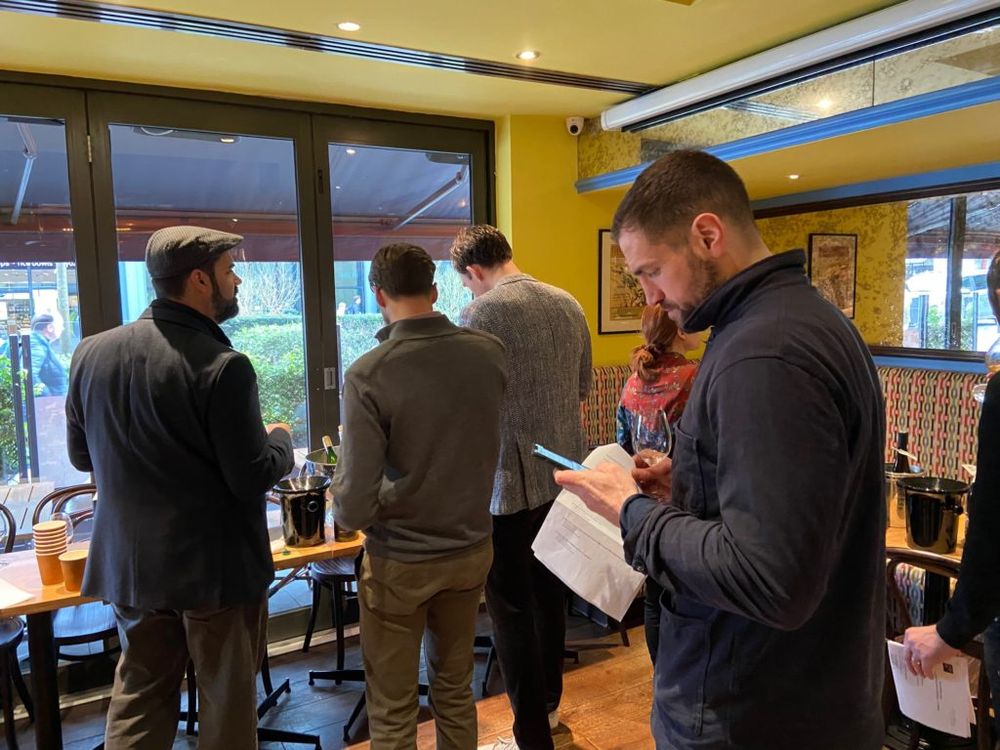
Elliot Awin from ABS was particularly interested to taste the Riesling selection from New York
Elliot Awin of ABS said although it is “quite heavily invested” in East coast US wines it was currently not working with any New York producers and was interested in finding out more. Particularly as it has such as strong and diverse Riesling portfolio, particularly from Germany, and was interested to see what options there could be from New York.
Maggie Macpherson saw this as a great opportunity to see what New York could potentially offer Jeroboams, both across its eight stores, and also for wholesale to the on-trade. “We’re always on the look-out for something delicious.”
Richard Lewis at Enotria said he welcomed the chance to have a deep dive into what New York can do: “I’m really happy these events were arranged as there isn’t much visibility for these wines in the UK. It allowed me a first feeling of what New York wine is about and what potential there is for our portfolio.”
Liberty Wines also does not currently have anything from New York, in what is still a relatively small US range, confirmed Lucy Perbellini, but she was on the outlook for something “unique” to list.
Keith Kirkpatrick said although Roberson represents 30 producers from California it has yet to step its toes in New York and was keen to “know more about it” and “really understand” what it might offer. “That’s why I am here,” he said.
Daniel Lambert said he is also not importing from New York but was doing well with wines he had brought in from across the border in Canada and was “keen to find out what was out there”.
It was a similar story for Richard Lewis, buyer at Enotria & Coe. “We don’t currently list anything from New York. Finger Lakes was raised as of potential interest by some of our fin dining sales team. The tasting showed that the potential for quality is there,” he said, before stressing it also had challenges in terms of finding a distinct point of difference for buyers.
An overview of New York Wines
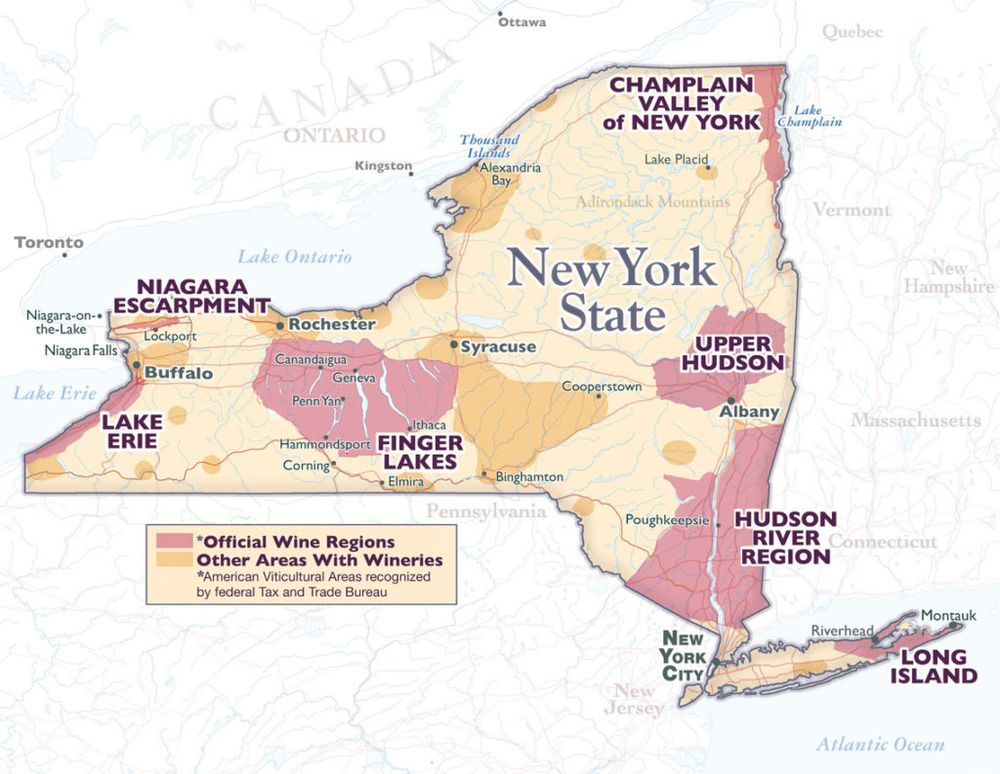
Looking back on New York State’s wine growing history, Russell, said it is useful to split it into three time periods:
- 1850s/60s – 1920s: this was the time when the region was famous for its ‘champagnes’ or what it called its sparkling wines. So much so that it was even exporting its version of ‘champagne’ to the French where it was used in blends of actual Champagne.
- 1930s-1980s: then came the era of New York’s ‘sherries’ and cream sherries in particular made in elaborate solero systems.
- Modern era where growers who had been growing native grapes started to switch them towards making bottled and premium wine. It means most of the producers in the region date back to the 1970’s and 1980’s.
One of the key influences that runs through so many of New York wines regions is water, said Russell. Be it the direct maritime influence you see in Long Island, through to Finger Lakes which is only 90 minutes from Niagara Falls and the surrounding glacial lakes.
If you take a broad view of New York then you are best to go too Long Island if you are looking for Merlots and other red varieties, whilst further up state, and the Finger Lakes, is where you will see Riesling come into its own, said Menges.”That’s our strong suit there,” she added.
Finger Lakes has also, over the last five to 10 years, started to build a reputation for its Cabernet Franc wines.
“There is a long history of winemaking in New York going back to the first settlements when they were making wine from native varieties,” said Menges. “We are now seeing a resurgence right across the region, with upcoming areas like in Niagara and Lake Eerie. There it’s significantly colder so they are growing more hybrids and native varieties,’ she said.
“We’ve got a great history of being able to overcome the great challenges of our cold climate. There is a lot of really amazing, committed, producers out there who are weathering the weather. In fact that’s what we are probably best known for.”

Snow is a permanent fixture for many months at Red Newt Cellars
In the Finger Lakes temperature might get up to the 30s in the summer months, but will then drop right down to minus 20 in the winter. “There can be weeks at a time when the temperature does not get above zero. So it limits what vines we can grow,” says Russell.
It is is the influence of Lake Ontario and Lake Eyrie that is really so important when assessing the conditions inside the Finger Lakes region itself, he explains. Especially the cold winds that blow in off Lake Ontario. “The two in tandem make grape growing possible,” he says.
It’s why the region is often likened “winemaking on a knife’s edge”, he adds. “You’re taking a lot of risks to make wine there, but if it’s successful then the rewards justify the risks,” he explained.
Which for Finger Lakes means the vines have to be planted tightly, close to each other and right down to the shores of the lake. “It’s an area where there are a lot of small micro climates, lots of very specific terroir expressions,” explains Russell.
Small growing season
The extreme weather also means there is a very small growing season in which to play with, adds Menges, and wineries take great care in when they go out and pick their fruit. “We get very late bud break and will therefore let our fruit hang as long as possible – often until we’ve had our first real snow of the winter as you want to leave your fruit out as long as you can.”
All of which has been complicated further by climate change which makes it even harder to accurately describe an “average”growing season, she adds. “Every year since 2014 the growing seasons have been wildly different. So it’s hard to predict what is going to happen.”
It also means producers and growers are talking far more about whether the time is right to start planting and trialing different grape varieties, or returning to the native varieties of the region, to keep in step with the changing weather.
The next varietals?
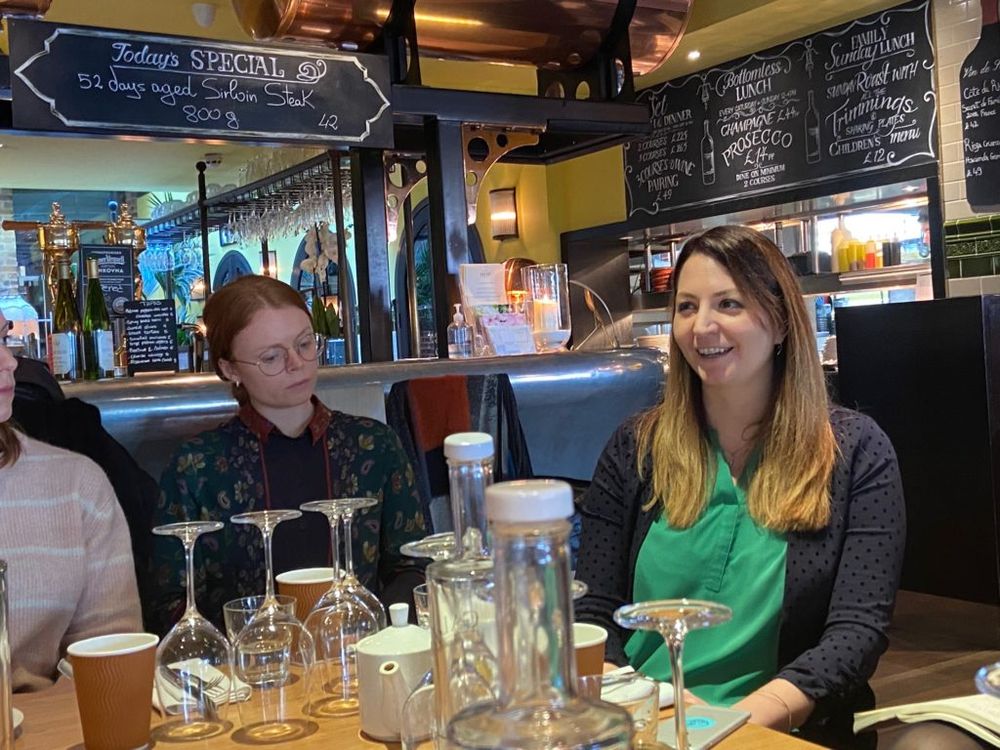
Jennifer Menges said there were constant discussions in the state about what different varietals can work there
Menges says the winery she works for also does a lot of tree grafting experiments: “We’re constantly asking ourselves: ‘What is going to be the next varietal for Finger Lakes? What is going to be possible to grow here as the climate changes?’”.
And the answer? Menges says more and more producers are placing their bets on red varietals, like Zweigelt, and Gamay. “They’re both very popular.”
But there are also plenty of others happy to play safe with more vines of Rielsing, Chardonnay and Gewurtztraminer “that are hearty enough to always do well”.
Russell agrees that red is where the action is when it comes to trying out new vines. Blaufrankisch is another, he says, that is doing really well in the region. “You would not have expected it to do so well, but it’s now pretty widespread.”
The fact the region is so alive to new ideas and is proving such a good breeding ground for different varietals, grown in such difficult conditions, it is attracting more winemakers to the area ready and willing to take up the challenge of making wine there.

Daniel Lambert says the logistics of bringing wine from the East Coast of the US is also attractive
Free-wheeling spirit
As Russell says: “You definitely have that free-wheeling spirit that is very New World in a way. What’s being planted and what we’re open to plant – well the sky’s the limit. There are as many flops as there are successes, but people are keen to try things and there is a lot of excitement about that.”
“It’s amazing how many people are coming into the region. Particularly young winemakers – and the jobs are there. There is a lot of interest. I feel lucky to have come from the area myself.”
Compared to the “death spiral” that Russell says has been taking place in other industries in the state – like the collapse of Xerox – the wine sector has been going through some sort of “renaissance – which is really gratifying to see”.
How to build brand New York

Mattia Scarpazza said it was interesting as a sommelier to compare the Rieslings and Cabernet Francs to those in Europe
Whilst the UK importers welcomed all the various projects and experimentation going on, some felt they might distract from what the state’s overall focus should be on and whether producers might be better directed to concentrate on the areas varieties the region can be most famous for.
Keith Kirkpatrick, for example, wondered if the interest in native varieties might take away the focus on what he sees as being the state’s two big strengths – Cabernet Franc and dry Riesling. Is there a danger of over complicating matters?
“Is that the way to build brand New York?” he asked. Kirkpatrick felt it might be better placed for producers to champion a white and a red grape variety and make them the heroes of the state.
“These are the varieties we can pin this region to and we are doing to do them the best we can,” said Kikpatrick. “In terms of export to the UK market you are coming in behind California, Oregon, Washington. It is identifying what you want to be known for.”
Richard Ellison agreed and likened the situation to England and the fact that its producers have widened their focus away from native varieties like Bacchus which would have held them back if they had not made that switch. “The ability to demonstrate how good England has become at producing Chardonnay and Pinot Noir to compete with Champagne has meant people are then interested in what else we can do. Show what you are good at first and then move into other areas rather than leading with the quirky stuff first,” he explained.
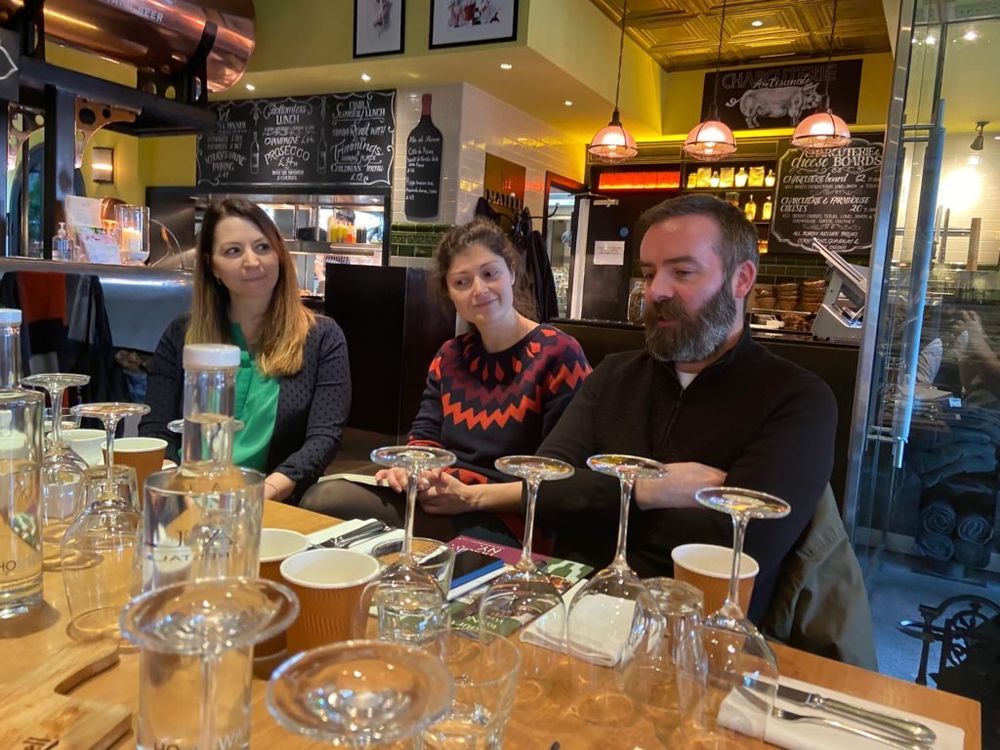
Keith Kirkpatrick said from a buyer’s point of view it would be good for New York to focus on what it is really good on when trying to drive exports
It’s recognising where you might sit on the international stage, added Kirkpatrick, and lowering the level of risk for importers. It would be a lot easier, he said, to sell a bottle of New York Riesling or Cabernet Franc at £18 a bottle than it would be for a local variety.
Lewis at Enotria agreed: I’d echo those comments. Producers will have to bite the bullet and realise what pricing they will have to accept to get UK distribution for their wines. I think if I couldn’t get wines starting at a trade list price, before discounts and VAT, of maximum £15 then it’s almost a non-starter.”
Matt Ellis at Top Selection is well placed to judge as it is already having good success with the Nathan Kendall Riesling and Chardonnay wines it imports into the premium on-trade. The key for him is not just the quality, but they have enough of a point of difference to be a great wine to use in fine wine dining pairing menus by the glass. “There they do very well,” he said.” They are a distinctive take on an Old World style.”
It’s been more of a challenge, he added, to get the same wines into retail.
Lewis could see why: “If I think the best styles are the elegant dry Finger Lakes Rieslings then we are already talking about a challenging product within the UK market where Riesling is still a niche part of the market. I also buy for Germany so it’s a topic close to my heart.”
- In part 2 of our report we will go into more detail about what opportunities the buyers felt New York has on premium wine lists and what styles and price points they think will work.
